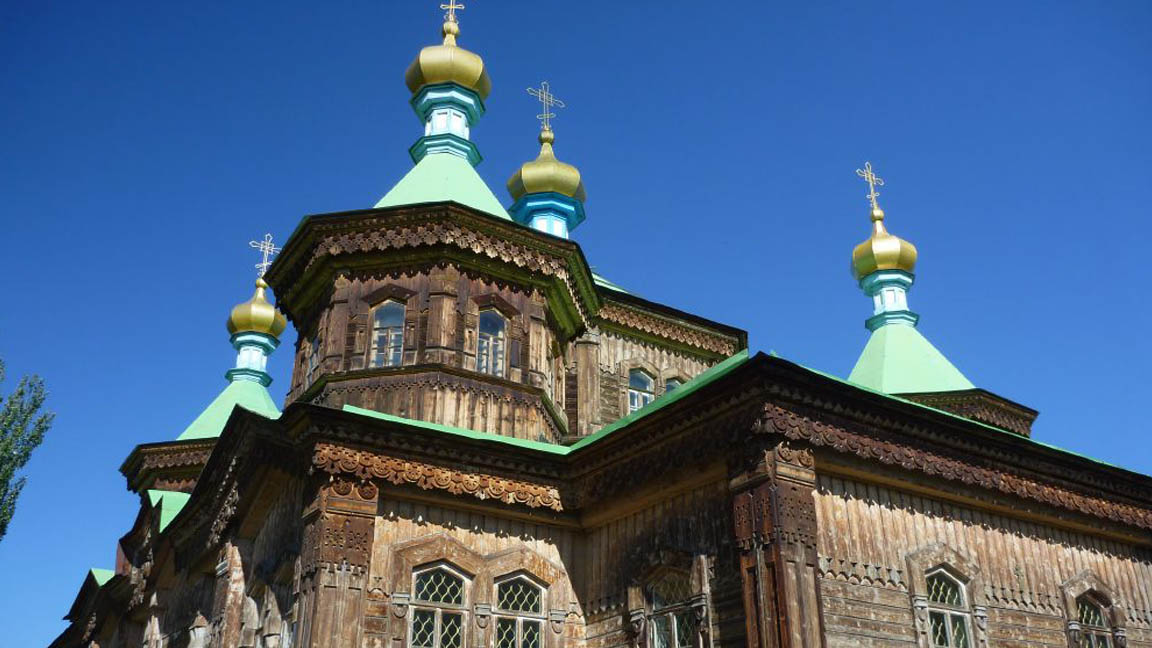


Karakol is located on the east coast of the Issyk-Kul valley. It is the most remote town in Issyk-Kul. It is 400 km from Bishkek and 220 km from Balykchi. There are two ways to get to Karakol: along the north bank of the lake, through the spa area - the town of Cholpon-Ata - or along the south bank, which is less crowded and much more beautiful because the unique nature of the south remains almost untouched.
The year of the karakol formation is considered to be the year 1869 of the 19th century, when Baron Kaulbars laid the foundation stone for the future city on the road that leads from the Chu Valley to Kashgaria. The city of Karakol was named after the river on which it was built. Mainly mud houses were built in the city until 1887, but wooden houses were built after the earthquake of 1887. According to the plan, the city is a strict rectangle that will simply be buried in the green, as in the past the developers had to create a garden and an alley in front of the house. In this way a garden city - a paradise for tourists - was built.
In the course of its history, the city has changed its name more than once. Until 1889 the city was called Karakol. In 1889 it was renamed Przhevalsk on the orders of the Tsar, in honor of the Russian traveler Nikolai Mikhailovich Prschewalsky, who died in Karakol on his 5th trip, and bequeathed it to be buried in this city on the banks of the Issyk-Kul. In 1922 the city was again called Karakol, but in 1939, on the 100th birthday of Przhevalsk, the city was again called Przhevalsk. And this name was used until the historical name Karakol was returned to the city in 1992, after the independence of Kyrgyzstan.
Karakol is famous for its many unique attractions. One such attraction is the nature reserve, in which there is Przhevalsky's grave, the memorial complex of his name, as well as his monument.
Another attraction of the city is the Orthodox Church of the Holy Trinity. It is a unique 19th century architectural structure. It is a wooden building, the roof of which is decorated with 5 golden domes. Another architectural structure - the Dungan Mosque - amazes with its splendor and its paintings. It was built in 1910 in the style of a Buddhist wooden pagoda without a single nail. The corners of the mosque are curved upwards and crowned with 4 golden dragons, while the gables of the three roofs face south.
A popular place for tourists is the Karakol ski base, which is 7 km from the town. In recent years the base has changed a lot: a new cable car has been installed, and new downhill slopes of different lengths have been created.
Many unique canyons are easily accessible from Karakol, such as Karakol, Ak-Suu, Jety-Oguz, which is famous for its health resort.